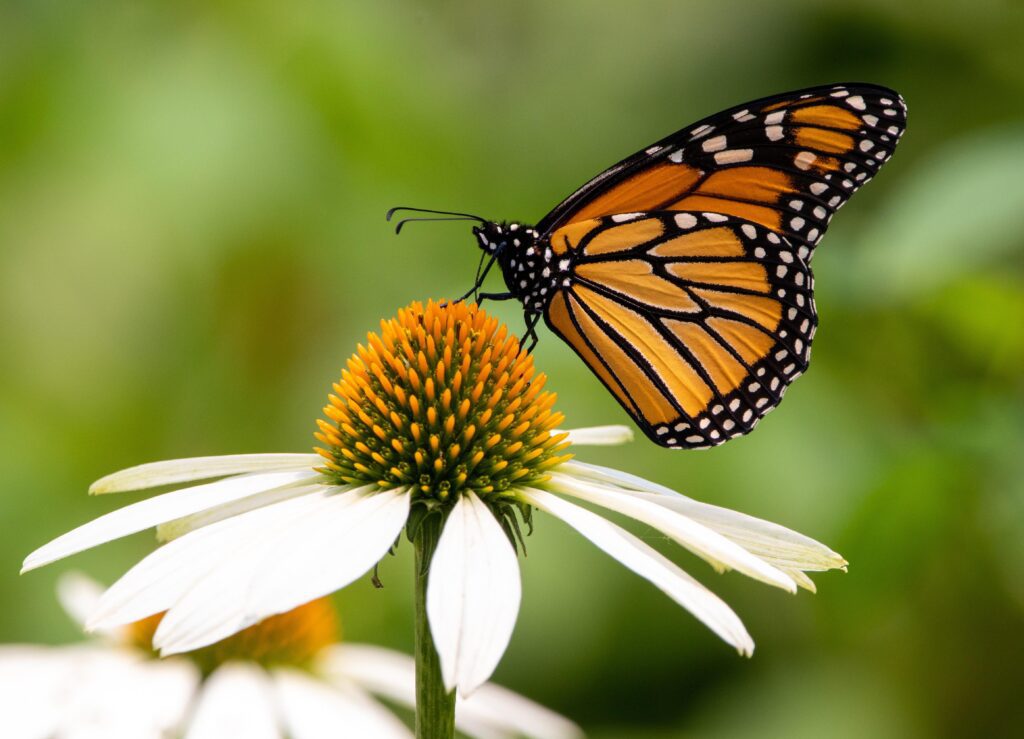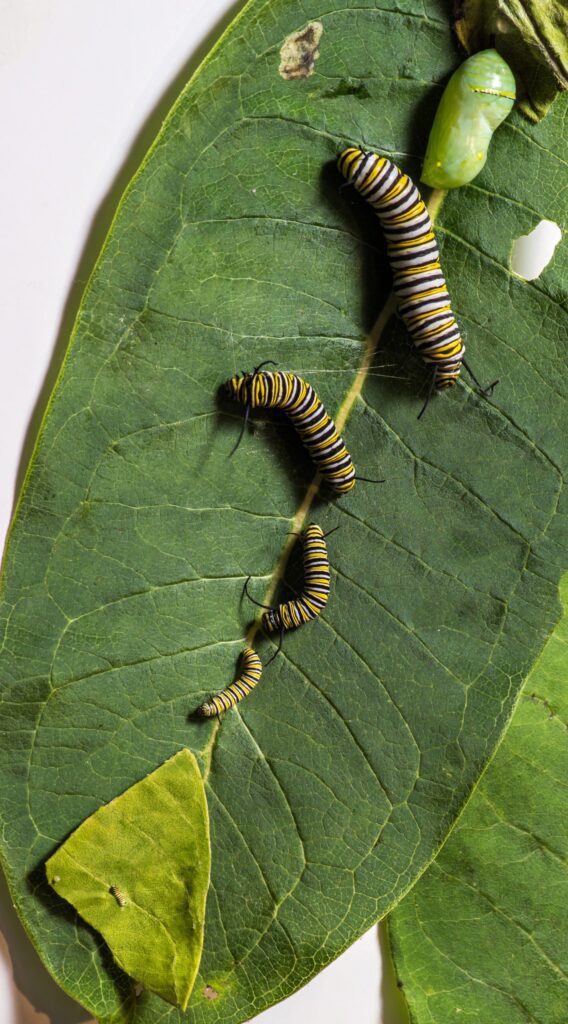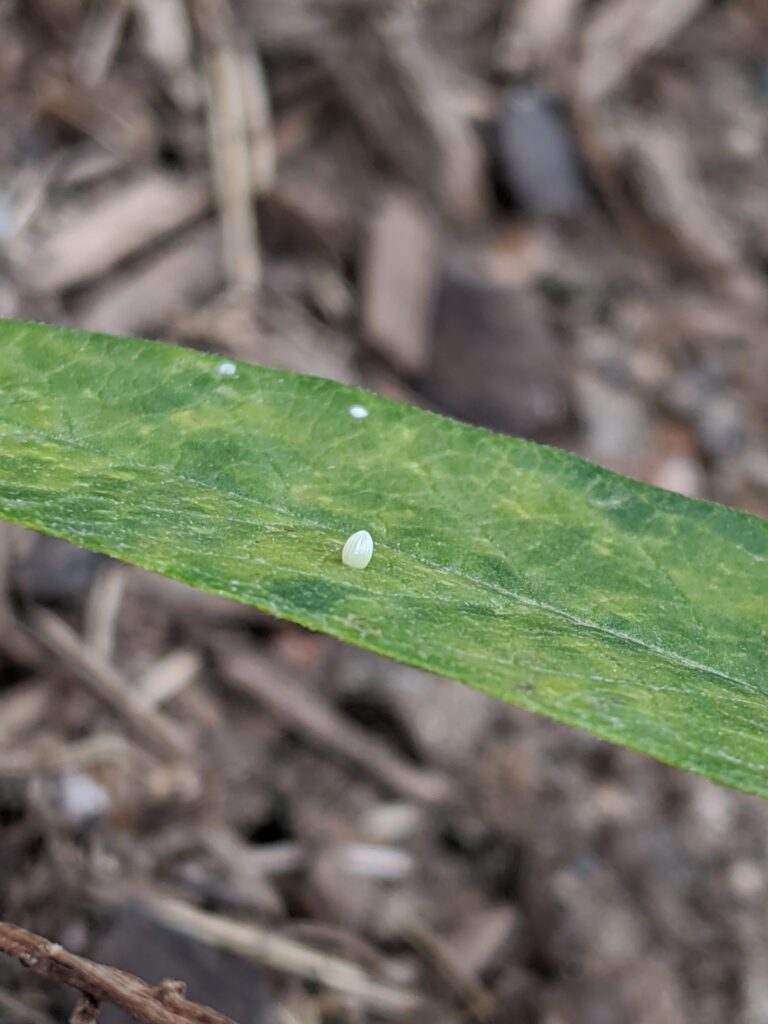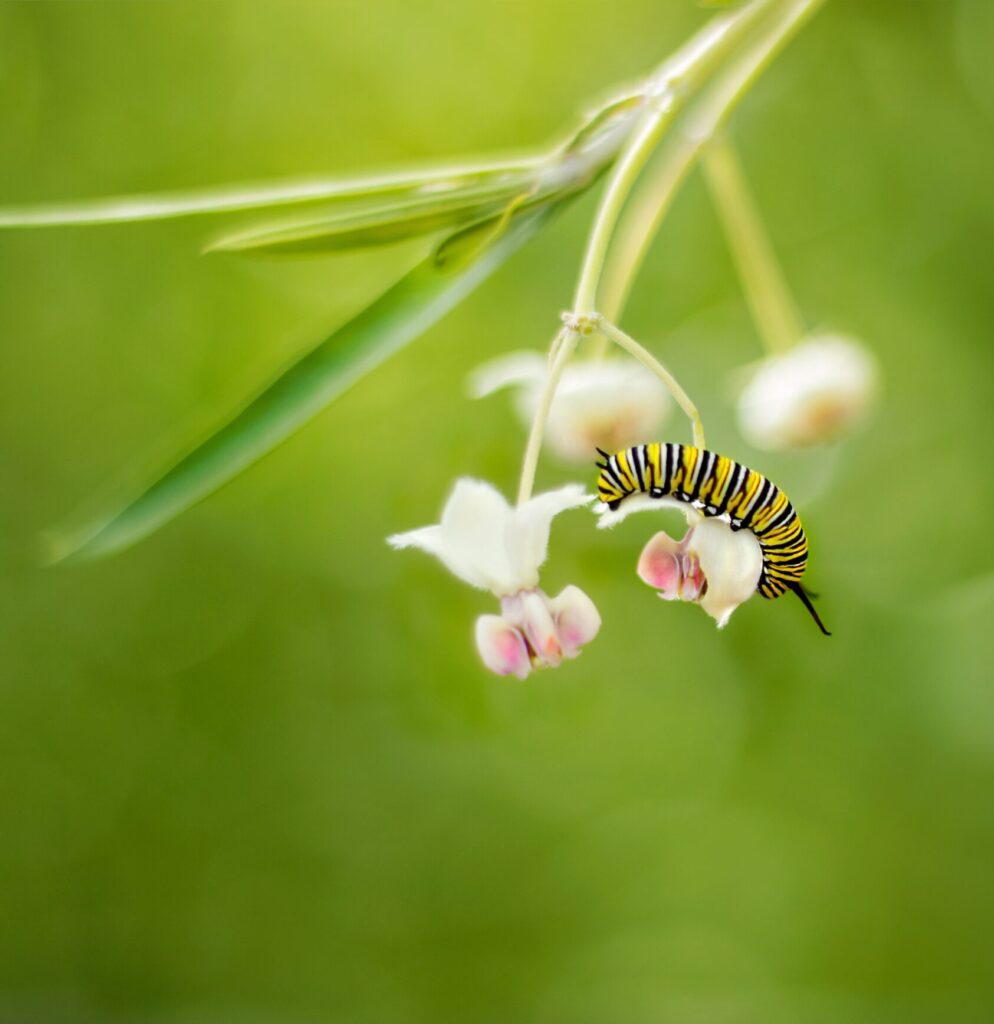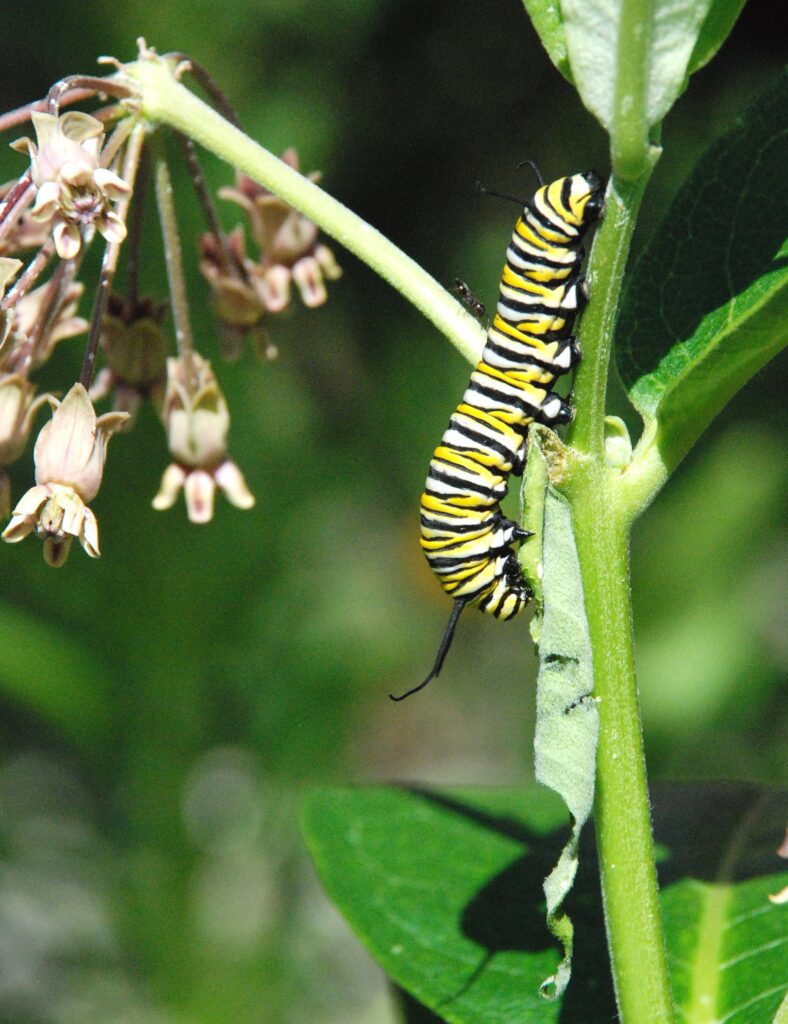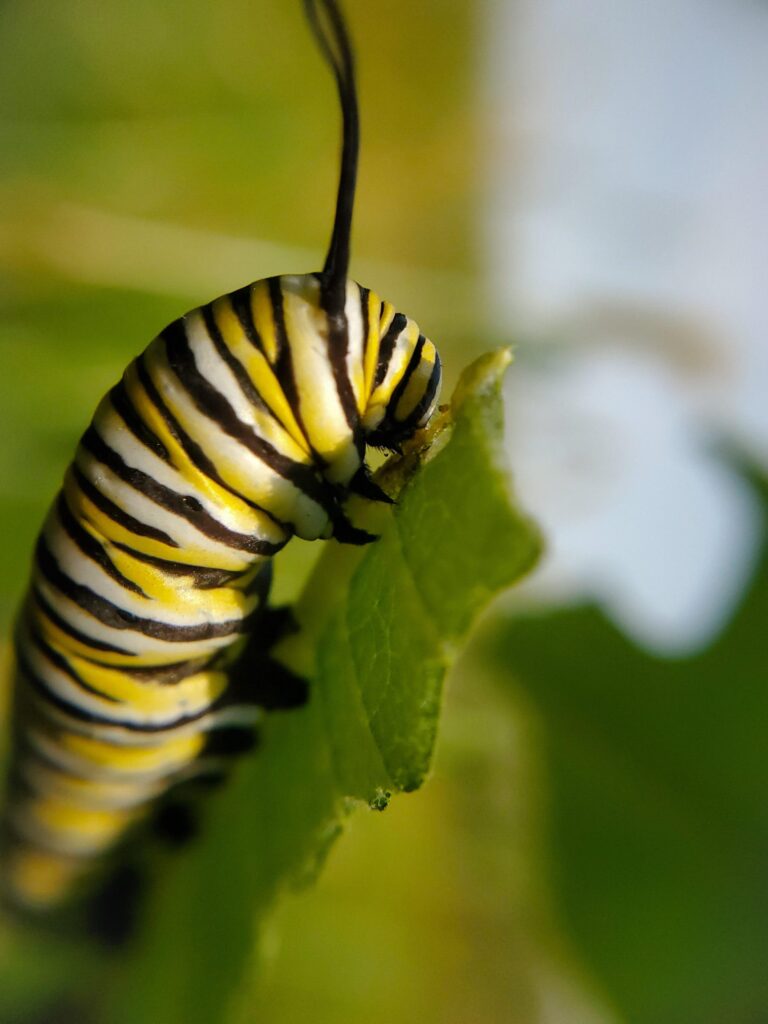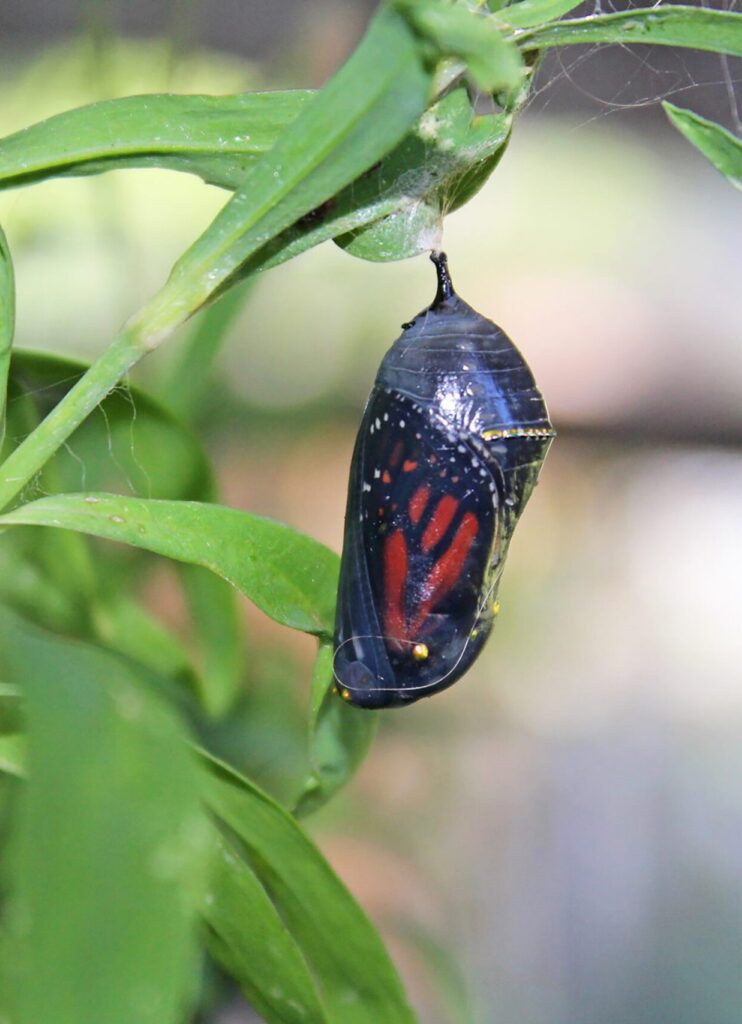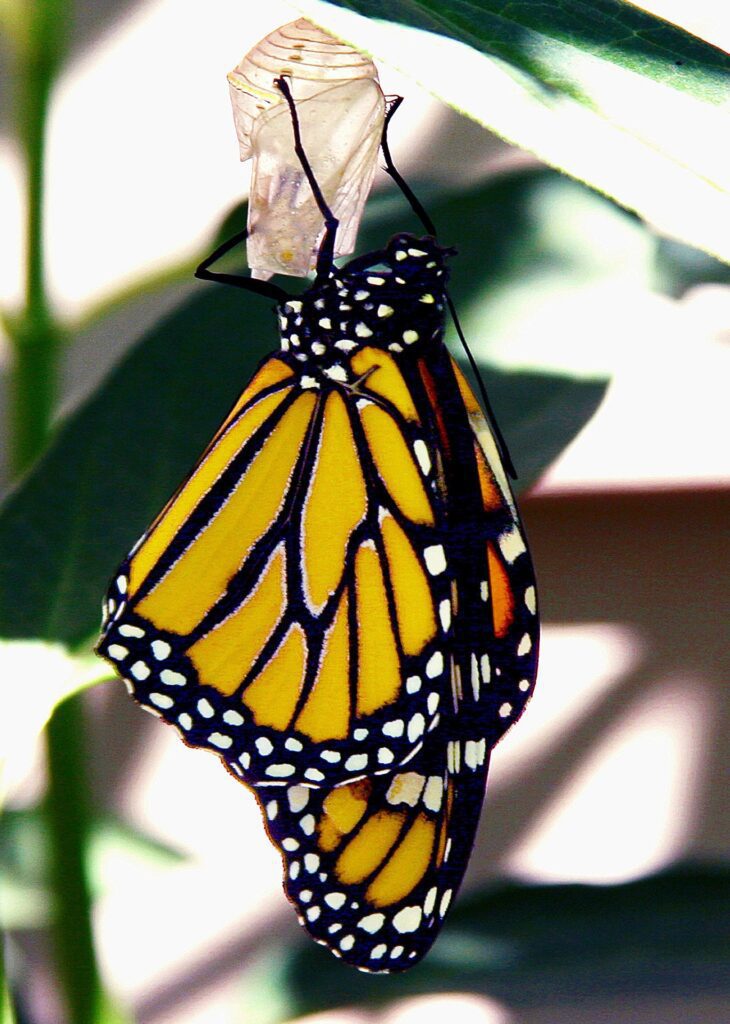The Great Monarch Skyway
Monarch Butterflies
The main focus of the Great Monarch Skyway project is the monarch butterfly.
Monarchs are easily one of the most recognizable butterflies in North America, with bright orange and black wings dotted with white on the outer edges, they stand out against the sky and the prairie flowers. Monarchs are also one of the most heavily studied butterflies on the planet with its seasonal migration from Canada and the United States south to California and Mexico for the winter. Let’s learn a little more about these beautiful butterfly celebrities including their biology, their migration habits, their pollination efforts, why they are an important indicator for the state of the environment, and what we can do to help them.
Monarch Biology
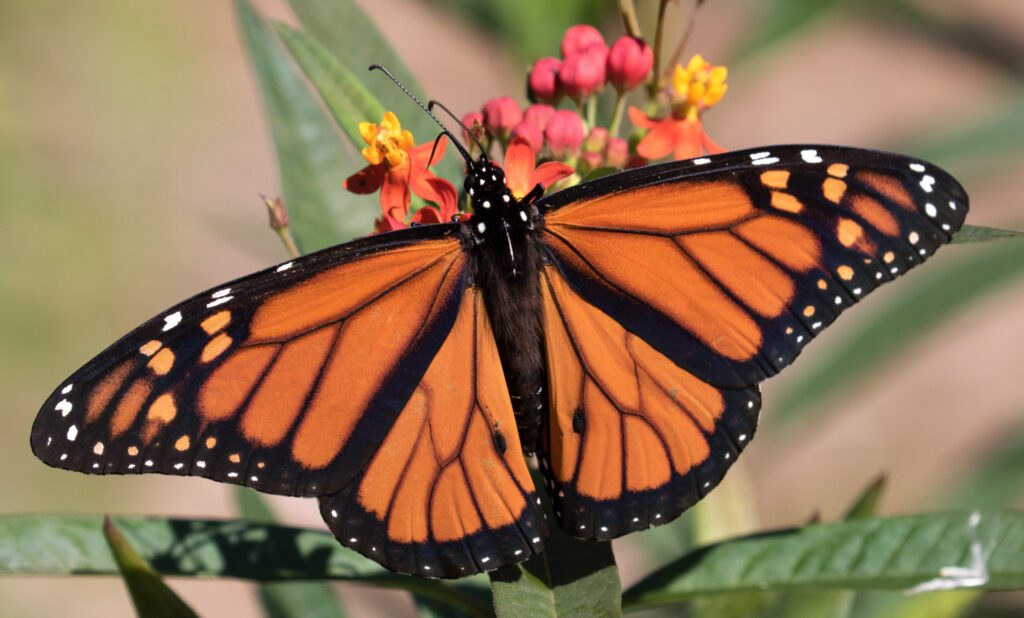
Monarchs are a medium sized butterfly with a wingspan of 3-4 inches. They have two sets of wings of deep orange with black borders and veins, and white spots edging the wings. The underside of the wings are slightly paler orange.
You can tell male and female monarch butterflies apart in 2 main ways. The males have thinner wing veins (black lines separating the orange cells) and have 2 distinct, raised spots on their lower (hind) wing. Females have thicker wing veins and do not have the spots
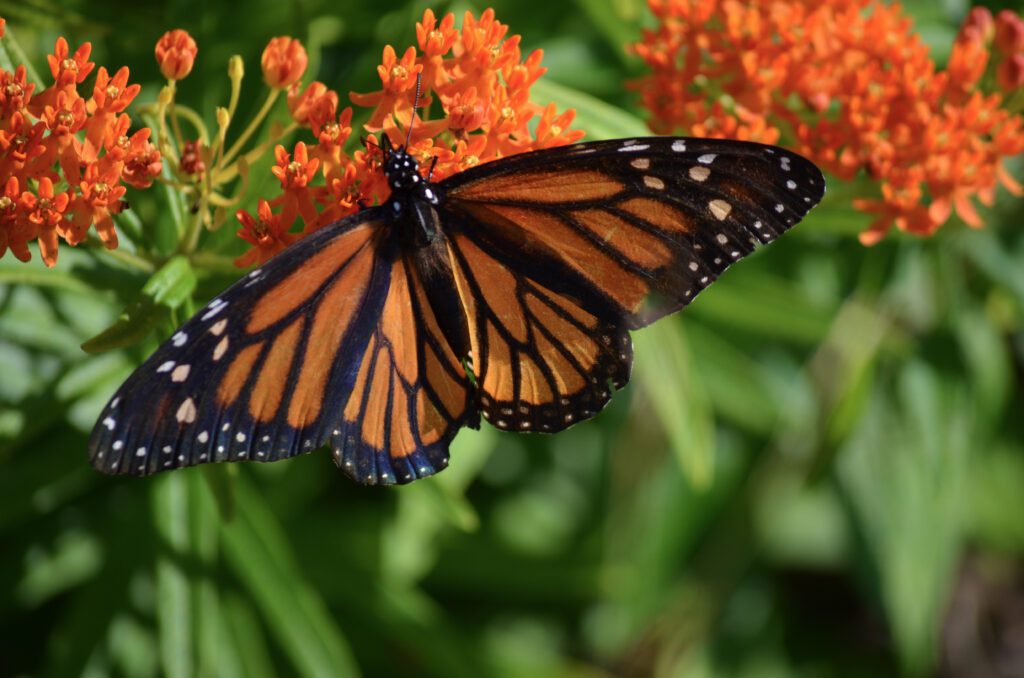
Monarch Life Cycle
Monarchs are a type of butterfly, and while they can look similar to moths, there are some important differences between them. Butterflies usually have long, thin antennae with club-shaped tips, while moths have thicker, feathery antennae. Butterflies also tend to have bright, colorful wings that they hold up over their bodies when resting, while moths often have duller colors and rest with their wings spread out flat over their bodies. Butterflies are typically slimmer and more streamlined, while moths are usually bulkier. Butterflies are active during the day, while moths are mostly active at night. Both butterflies and moths go through the same four life stages: egg, larvae (caterpillar), pupa, and adult. However, butterflies form chrysalises during the pupal stage, while moths form cocoons.
Monarchs start as a tiny eggs laid on milkweed leaves, which are the only plant monarch caterpillars can eat. The eggs hatch after 3-5 days and the tiny caterpillar will generally eat its egg case. The caterpillar’s main job is to grow, and it spends most of its time eating. It goes through five stages of growth, called instars, and can grow by about 2000%. The caterpillar will stay in the first four instar stages for 1-3 days each, but in the fifth instar, it will remain for 3-5 days. This means a caterpillar can be a caterpillar anywhere from 7-17 days before they make their chrysalis. Caterpillars are also very familiar with their distinctive yellow, black, and white stripes and black tentacles (which look like antennae) on their bodies.
Once a caterpillar completes all five instars, it will molt one final time. First, it spins a silk mat and hangs upside down by its last pair of prolegs. As it sheds its skin, it may appear to slowly turn green, but this is actually the chrysalis underneath the caterpillar’s skin. After the skin is shed, the chrysalis slowly hardens and finishes forming into a bright green with accents of gold and black. The pupa stage lasts between 8 and 14 days. Near the end of this stage, the chrysalis begins to show the black and orange colors of the butterfly’s wings as they develop pigmentation.
The Great Migration
Monarch butterflies go through approximately four generations every year. The first generation migrates from Mexico to the United States in the spring. The second and third generations live their entire lives in the northern portion of the range and have no role in migration, but have the important job of laying many eggs. The fourth generation emerges, does not immediately mate or reproduce, and instead feeds before migrating south to Mexico. Monarchs do not reproduce while overwintering in Mexico; they wait until they migrate back to their northern range in the spring. Therefore, the fourth generation becomes the first generation for the new year of monarchs. Interestingly, this means that the butterflies that migrate to Mexico and back to North America are the great grand-butterflies of the last generation that migrated. This is a good example of instinct versus learned behaviors!
Pollination
Monarch butterflies are important pollinators for many types of native wildflowers. As pollinators, monarchs are essential for many ecosystems to thrive and help maintain a healthy landscape for other animals, plants, and humans. Monarchs are a big, visible, charismatic butterfly that sound the alarm for all pollinators; issues that affect monarch butterflies such as habitat destruction, pollution, pesticides, and climate change also affect other pollinators like bees, bats, birds, and other insects.
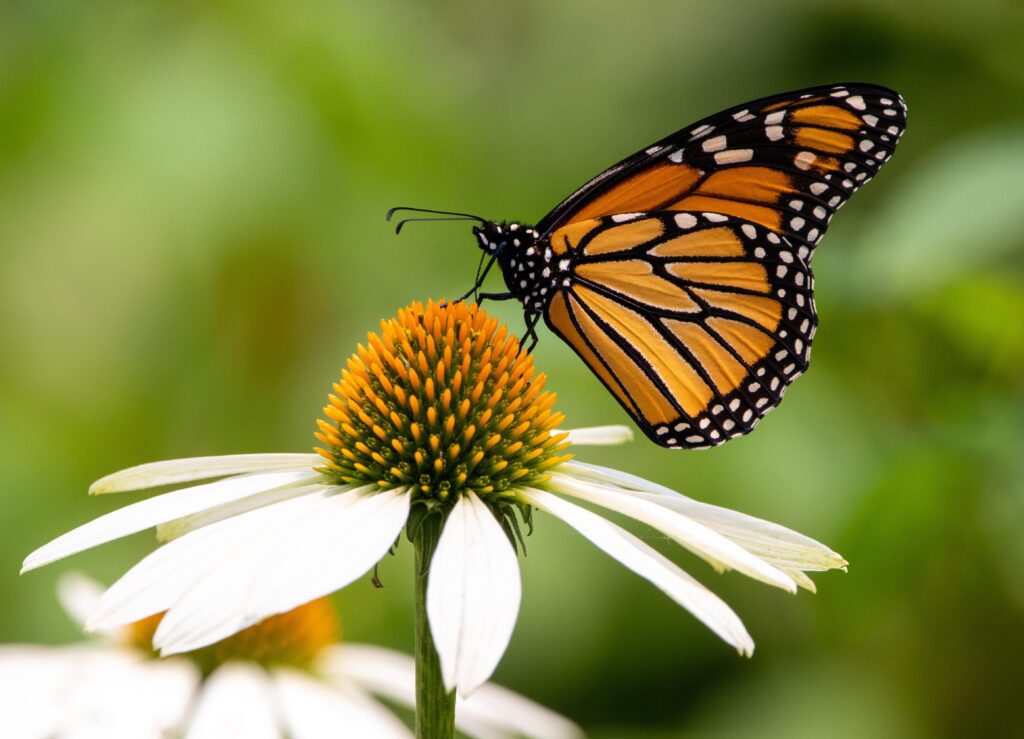
What Can We Do?
The best thing we can do to help monarch populations is to plant milkweed. Milkweed is the only host plant for monarch butterflies, which means it is essential for the complete life cycle of the monarch. For years milkweed was considered an annoying pasture and roadside weed, and unfortunately was often destroyed. Planting more milkweed in our yards, prairies, and roadsides is a great way to offer monarch butterflies a safe place to lay their eggs. Providing nectar sources of native flowers, avoiding pesticides that can kill caterpillars and butterflies, and avoiding herbicides that can kill milkweed are other ways you can directly help monarchs. We can also support conservation efforts and work to educate others on the importance of these insects and the plants that support them.
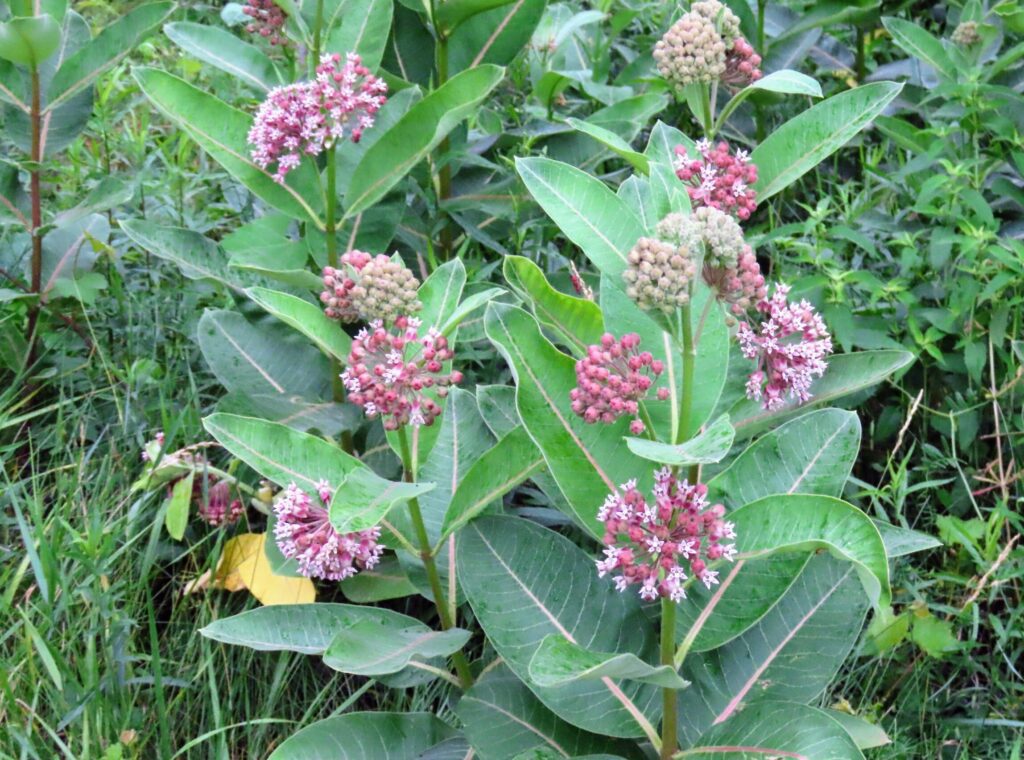
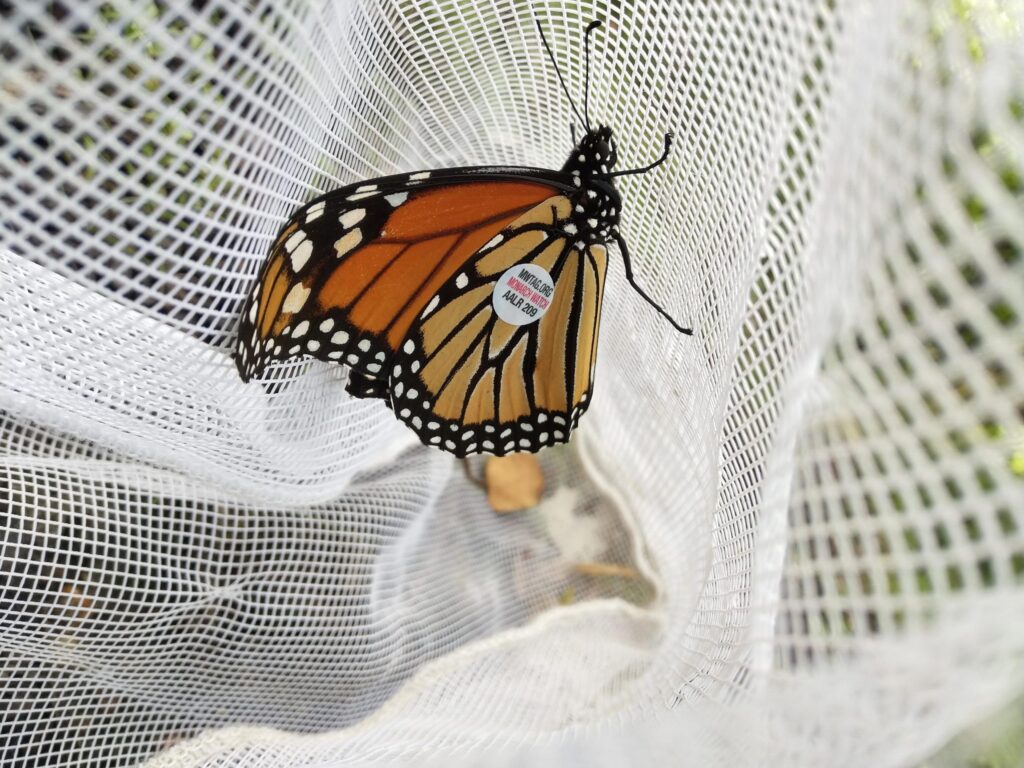
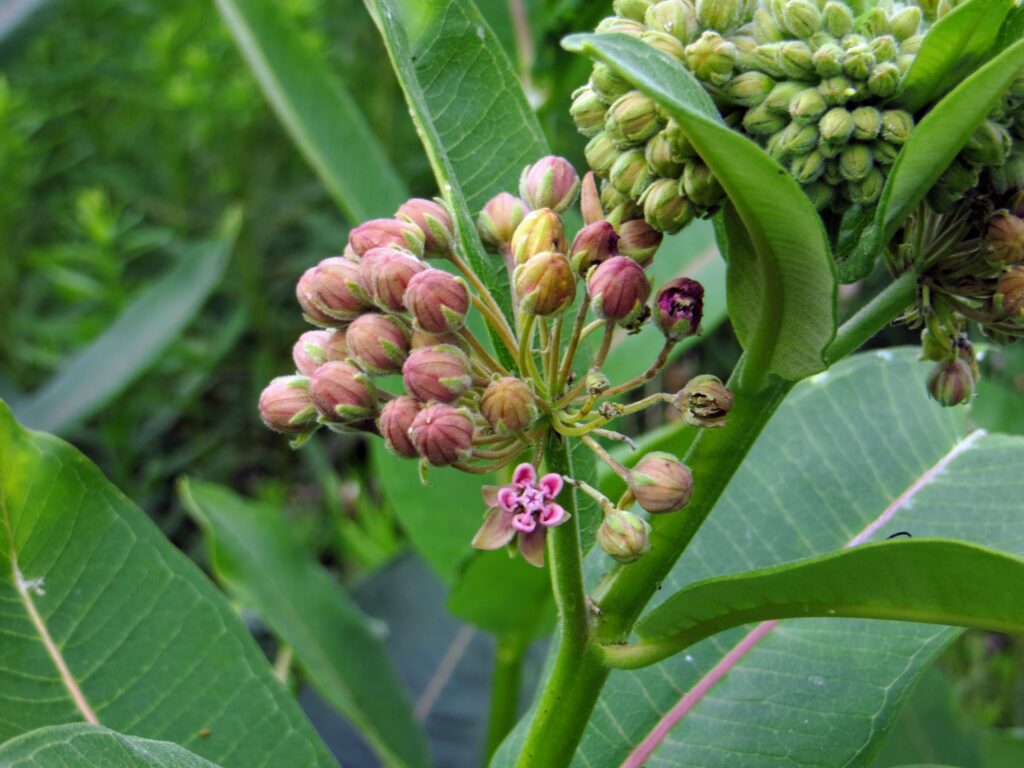
Monarch tagging is a large scale, citizen-science project. Tagging and recording data on monarchs helps researchers know where and when monarchs are migrating to and from. The tag looks like a little sticker that goes on a certain cell on the butterflies wings (it looks like an orange mitten.) This location causes the least interference with how the monarch flies and avoids predators. The people who tagged the monarch send in their data to the organization, Monarch Watch, and then observers in Mexico and along the migration path send in when they find monarchs with a tag on it. This gives trackable data to researchers.
